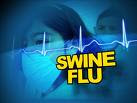 What is swine flu?
What is swine flu?Swine influenza is a disease that pigs get. The virus currently spreading among people is now generally referred to as swine flu, although the origin of the disease is still under investigation. There is no evidence of this strain of the disease circulating in pigs in the UK.
There are regular outbreaks of swine flu in pigs worldwide. It does not normally infect humans, although this does sometimes happen, usually in people who have had close contact with pigs.
Swine flu viruses are usually of the H1N1 sub-type. The swine flu that has spread to humans is a version of this virus
Is the new swine flu virus contagious?The Health Protection Agency (HPA) says the new swine flu virus is highly contagious and is spreading from person to person.
Swine flu spreads in the same way as ordinary colds and flu. The virus is spread through the droplets that come out of the nose or mouth when someone coughs or sneezes.
If someone coughs or sneezes and does not cover it, those droplets can spread about one metre (3ft). If you are very close to them you might breathe these in.
If someone coughs or sneezes into their hand, those droplets and the virus within them are easily transferred to surfaces that the person touches, such as door handles, hand rails, phones and keyboards. If you touch these surfaces and touch your face, the virus can enter your system and you can become infected.
See Causes for more information
Back to top
How long does the virus live on surfaces?The flu virus can live on a hard surface for up to 24 hours, and a soft surface for around 20 minutes.
Back to top
What is the incubation period for swine flu?According to the Health Protection Agency, the incubation period for swine flu (the time between infection and appearance of symptoms) can be up to seven days, but it is most likely to be between two and five days. But it is currently too early to be able to provide details on virus characteristics, including incubation period, with total certainty.
Back to top
When are people most infectious?People are most infectious soon after they develop symptoms. They can continue to shed (spread) the virus (for example, in coughs and sneezes) for up to five days (seven days in children). People become less infectious as their symptoms subside, and once their symptoms are gone they are no longer considered infectious to others.
Back to top
Should I avoid contact with people suspected of having swine flu?People with suspected swine flu will have been asked to stay at home and restrict their contact with people. Most people should continue their normal life, including going to school or work. This includes children who attend a school with a confirmed case of swine flu.
There is no need to avoid contact with people who might simply have come into contact with those with the illness, such as the parents of children at schools with a confirmed case but who are not themselves ill.
Back to top
How dangerous is it?It is difficult to judge this at the moment. There have been deaths, but for most infected people the symptoms have not been severe.
It appears that early doses of antiviral medicines such as Tamiflu are effective in helping people to recover. In the UK we have enough antivirals to treat half the population if they were to become ill. Also, orders of Tamiflu have been placed to increase UK supplies to 50 million doses, enough to treat 80% of the population.
Back to top
Will I die from swine flu?For most people, the illness has been mild and self-limiting. The virus has caused severe illness in a minority of people, most of whom had an existing serious condition. NHS staff are well trained in treating people who are in hospital with swine flu. They can provide effective treatment for any secondary bacterial infections, such as pneumonia.
SOURCE:http://www.nhs.uk/Conditions/Pandemic-flu/Pages/QA.aspx#incubation
































.jpg)